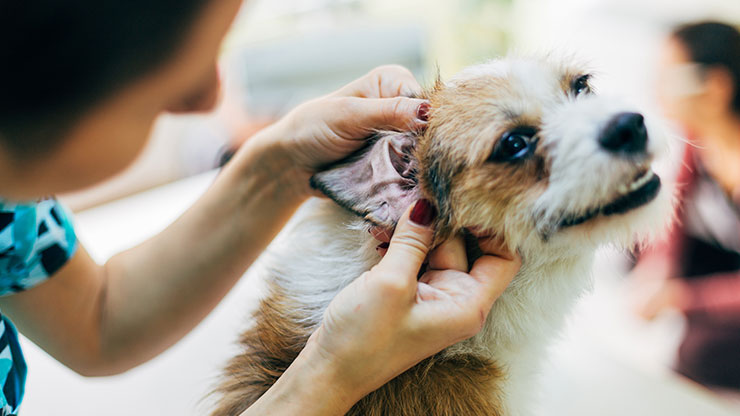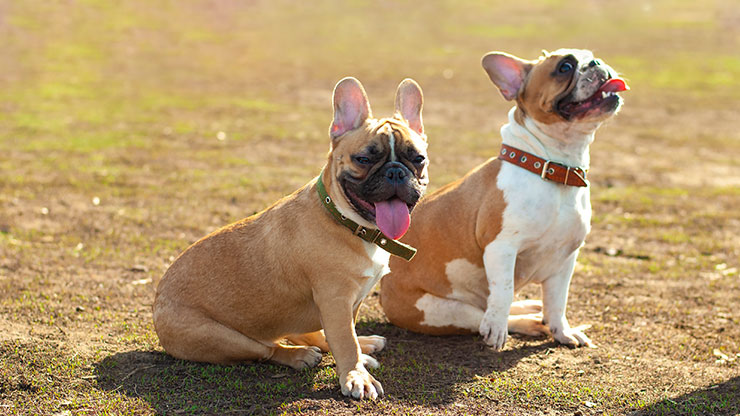
What To Look For In A Stud Dog
Choosing the right stud dog is crucial for any breeder. This decision impacts the puppies' genetic traits and how well they’ll meet breed standards, but more importantly, it impacts their overall health and temperament as adults. To help you through this decision, here’s a constructive guide on what to consider when selecting a stud dog to meet your breeding objectives and support the well-being of the puppies.
How to Locate the Ideal Stud Dog
First, let’s go over the different routes to finding the right stud dog. Often, this part of the process involves a mixture of networking, research, and vetting potential candidates. Helpful strategies include:
- Talk to the breeder from whom you bought your female dog. They can give insights and might recommend a suitable stud based on what they know about her background and temperament.
- Check with a breed club, as these groups are full of resources and experienced breeders who may be able to suggest breed-specific avenues, such as world-class labrador stud services.
- Use websites, forums, and social media groups focused on dog breeding to meet reputable breeders and stud dog owners.
- Attend dog shows or other events, as they allow you to meet other breeders and see potential candidates in person.
Building a Relationship With Stud Dog Owners
Be aware that when you speak with stud dog owners, they’ll likely ask questions about your own breeding practices and your dog's health. This interest indicates their commitment to responsible breeding. To facilitate effective communication, it's essential to be open and share details about your female dog’s health, temperament, and breeding history. This transparency helps build trust and more amicable relationships. Additionally, be sure to clearly discuss your expectations and what the other owner anticipates. This approach helps both parties have a clear understanding and helps prevent any potential misunderstandings in the process.
The Importance of Timing
Timing is another big component of choosing a stud dog. Ideally, you should begin your search well before your female dog is ready to breed. Starting early is beneficial for several reasons. First, it allows you to familiarize yourself with your dog's heat cycles, helping you pinpoint the best time for mating. Secondly, choosing one ahead of time gives you ample opportunity to prepare thoroughly. This includes completing all necessary health screenings, assessing the stud's temperament, and confirming his pedigree details. With these preparations handled in advance, you can approach the breeding date with everything set for a successful mating.
Comprehensive Evaluation Criteria
Next, when you’re ready to select the right stud, consider the following factors as part of your evaluation:

Health Clearances
A stud dog's health is vital. He should have comprehensive health clearances to prevent any genetic diseases from being passed to the puppies. Here’s what to look for:
- Hip and elbow dysplasia: Certifications from groups like the Orthopedic Foundation for Animals (OFA) or PennHIP are good indicators of healthy joints.
- Eye health: The Canine Eye Registry Foundation (CERF) approves annual eye exams, which help prevent inheritable eye diseases.
- Genetic disease testing: It's wise to check for specific genetic conditions with DNA tests. These can include Progressive Retinal Atrophy (PRA), von Willebrand's disease, and others.
Temperament
Temperament can be just as important as health. You want a dog whose personality traits mesh well with your female and lead to balanced puppies. Keep an eye out for a dog that is:
- Confident and calm
- Not too aggressive or timid
- Friendly and sociable
- Intelligent
- Trainable and responds well to commands
Pedigree
Checking the stud dog’s pedigree is key. You'll want to verify his lineage aligns with your breeding aims. Aspects to consider are:
- Champion bloodlines: Dogs from champion lines are often preferred because they are likely to have the desired qualities in the breed.
- Inbreeding coefficient: Monitor the inbreeding coefficient (COI) to avoid health issues caused by too much inbreeding.
- Proven history: Opt for stud dogs from healthy, long-lived lines. You may also want to pursue dogs that excel in specific areas like agility, obedience, or service.
Conformation to Breed Standards
Conformation refers to how well a dog adheres to the breed standards established by organizations such as the Continental Kennel Club. You’ll want to confirm that the stud showcases the desired characteristics for the breed, including body shape, size, coat, color, and overall appearance. You should also observe how the dog moves. A stud’s gait and posture are important as these physical traits can be inherited by the puppies.

Compatibility
Matching the stud with your female is key. This involves more than just physical compatibility; it includes genetic and temperament aspects, too. To get a good match, consider:
- Size and build: The stud's size and build should be suitable for your female to prevent any birthing issues.
- Temperament matching: Ideally, the personalities of the stud and your female should complement each other, leading to well-rounded puppies.
- Genetic compatibility: Both dogs should have compatible genetics to reduce health risks and enhance desired traits in their puppies.
Breeder Reputation
Never underestimate the importance of the breeder's reputation. You want someone known for ethical breeding and healthy litter. Key things to look for:
- Transparency: Good breeders are open about their breeding practices and the history of their dogs.
- Support: Look for a breeder who offers guidance throughout the process and even after the puppies are born.
- Commitment to improvement: Seek out breeders who actively work to improve the breed. This includes participating in breed clubs, competitions, and ongoing education. A breeder dedicated to enhancing the breed is likely to prioritize health, temperament, and adherence to breed standards.
Contractual Agreements
Finally, ensure clear contractual agreements are in place. These should detail all aspects of the breeding, including stud fees and health guarantees for the offspring. This helps protect both parties and maintains a professional standard in the arrangement.
Successful Breeding With Careful Stud Selection
Choosing the right stud dog is a pivotal step in your breeding journey. This decision shouldn't be taken lightly, as it lays the foundation for not only the health and quality of the puppies but also the future of the breed itself. By diligently applying the insights from this guide and focusing on the key factors discussed, you are well on your way to finding the perfect canine candidate.
---










